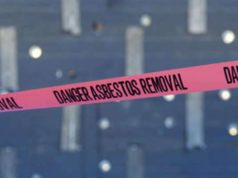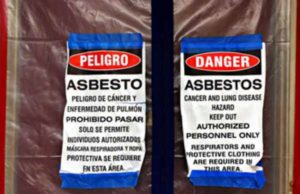
Reporting and Record Keeping Requirements for Waste Disposal
As you can imagine, preventing asbestos waste from harming others through improper disposal and other exposure is a priority for the EPA, hence very stringent regulations on the disposal of this waste. Every amount of asbestos waste that is generated from a construction site will be subject to the creation of a waste shipment record and a number of forms that must be returned to the EPA. States will designate disposal sites for certain counties or certain types of waste. Complying with both federal and state regulations for the transport and control of asbestos materials is essential to prevent fines, revocation of licenses and even imprisonment for wanton disregard for NESHAP regulations on asbestos pollution.
Waste shipment record
The standard Wasted Shipment Record form is used by most states and the EPA to account for the asbestos material shipment. Waste generators are responsible for filling out the first nine questions on the form, which require the following information.
– Worksite, include the name and telephone number of the owner
– Remover’s name and contact information
– Waste disposal site address and telephone number
– Name and address of responsible agency, generally the state authority
– Containment units used to store and transport the asbestos
– Total amount of asbestos transported, which can be expressed in square feet, cubic meters, cubic yards or a liner measurement
– Special handling instructions, if applicable and an emergency contact telephone number
– Generators certification, typically the state certification that allows a contractor to perform asbestos abatement and hand over that waste to the appropriate transporter.
The waste shipment record is then handed to the transporter, who will retain a copy of the incomplete form. The transporter (sometimes there is space for two transporters) will need to provide their name, signature, contact information and the date of the hazardous material transport on the waste shipment record. Any discrepancies in the amount claimed by the waste generator and the amount that is to be transported. The transporter may have to reject shipment of the hazardous material if there is a significant discrepancy in the amount noted on the form and the amount to be transported.
After the transported materials arrive at the waste disposal site, the Waste Shipment Record is signed and certified again, this time by the site’s owner or operator. This effectively moves the chain of custody for the hazardous material away from the transporter and generator. Most Waste shipment record forms provided by states and the EPA will have detailed instructions at the back of the form, detailing the proper information to enter and other details about the form that should be noted.
What are possible containers that can be used to transport asbestos material?
The typical procedure for small amounts of friable asbestos is double bagging. Double bagging provides a redundant barrier to punctures and tears and will keep fibers from escaping for the material during transport. The bag must be adequately labeled as asbestos containing material, with appropriate warnings about the dangers of improper handling. Larger amounts of asbestos will be stored in barrels or drums during transport and disposal. This includes both metal and plastic drums and the container type will be noted on the waste shipment record.
Emergencies
Generators are expected to have an emergency line that is available 24/7 when dealing with the transport of asbestos containing materials. This emergency number will be noted on the waste shipment record.
Accuracy of records
All records must be legible and accurate. The waste transporter or operator of the disposal site may refuse asbestos waste that is stored improperly or accounted for on the waste shipment record. Any and all discrepancies will be reported to the relevant state authority, or the EPA, depending on the nature of enforcement on that specific shipment of asbestos waste. The completed waste shipment record form, complete with the disposal site operator signature is returned to the waste generator for record keeping.
Reporting requirements
In addition to keeping sounds records of amounts of asbestos containing materials transported and disposed, routine reports must be filed with the relevant state or federal agencies. This includes any discrepancies discovered in materials received from waste generators and improperly disposed asbestos waste that requires remedial action in order to be up to standard.
Discrepancy reports must be sent to the relevant authorities within 15 days if discrepancies between what the waste generator has noted and the waste disposal site has noted do not match. All discrepancy reports must include the waste shipment record in question and an explanation of the discrepancy.
The waste generator should expect the completed waste shipment report in 35 days and should contact the disposal site after that to inquire about the status of the paperwork. If 45 days have elapsed, the waste generator shall submit an exception report to the relevant agency or state authority. These reports include the incomplete waste shipment record form and a cover letter stating all efforts to located and account for the hazardous waste.
A report of improperly enclosed of uncovered waste should also be filed if the bags or barrels are transported to the site and the waste disposal site operator notes issues with the way these items are stored. Filing this report will allow the relevant agency to make a determination on the appropriate course of action to prevent potentially hazardous material from affecting the disposal site.
Operation of a waste disposal site
The EPA, through provisions in the NESHAP, has specific guidelines for the appropriate operation of the waste disposal site. This includes specifications for the disposal trenches and other regulations to have a site certified for asbestos disposal.



























